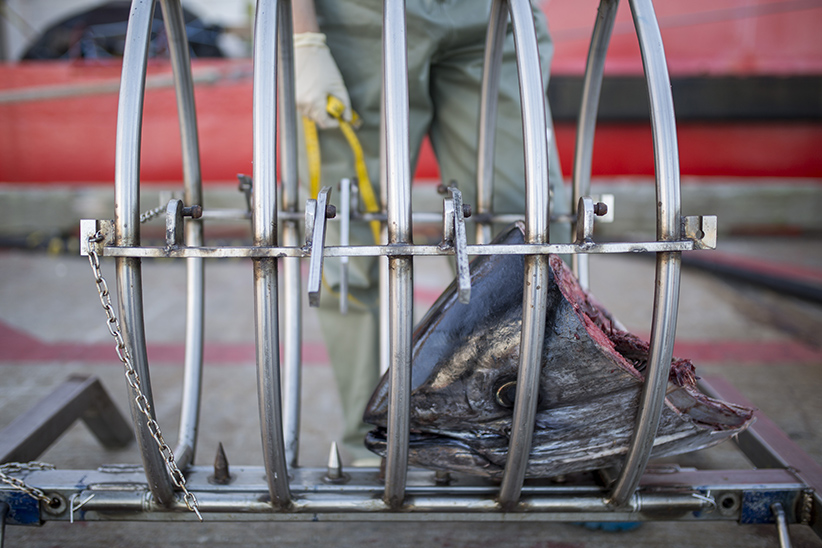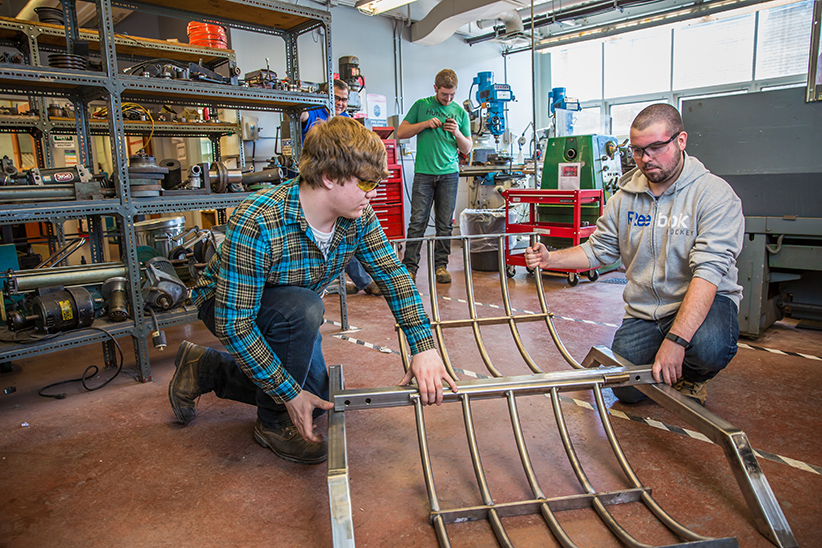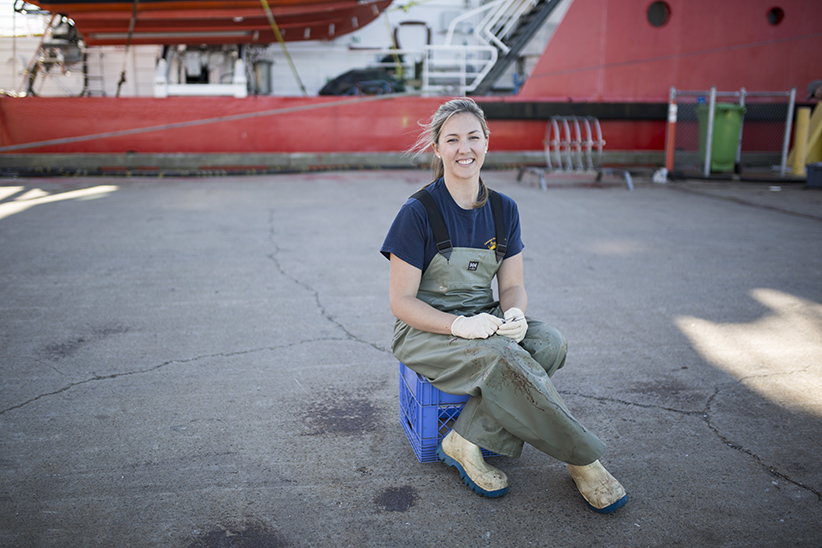Bright Idea: A tuna vise that gets a grip on fish heads
The tuna vise is a two-metre, clam-shaped contraption made of stainless steel that won’t rust in salt water
The tuna vice holds a tuna head. (Photograph by Nick Iwanyshyn)
Share

Great minds do not think alike, and that’s why universities and colleges are the mother of inventions. Click here for the rest of our Bright Ideas series.
Jon Lowthers and students: Nova Scotia Community College
If you ever need to know how old your tuna fish is, just do what Anna MacDonnell does: “I extract the otolith, the little ear bone that all bony fish have, which, when viewed under a microscope, has annual growth rings like a tree trunk,” says the fisheries technician with the Department of Fisheries and Oceans in Dartmouth, N.S. She needs to know the age of the fish to help assess the health of the tuna population, but this is no easy task when dealing with a 450-kg fish; the head alone can weigh 30 kg. It’s also messy and dangerous work. “I had a piece of plywood with nails sticking out. I’d shove the tuna heads onto the nails and my coworker would hold the head still while I ran an electric chainsaw through it.” Needless to say, it wasn’t very precise, and samples were destroyed about 25 per cent of the time.
READ: Nova Scotia Community College | Halifax, N.S. | Founded 1996
Last January, MacDonnell was describing this work problem over dinner with some old friends from high school, including Jon Lowthers, then an instructor in the electro mechanical technician program at Nova Scotia Community College in Pictou. “My wife works in occupational health and safety and she said we needed to come up with a better option,” he says. Lowthers took the problem into the classroom, which included student James Sutherland, the son of a fisherman who had spent lots of time on tuna boats. Sutherland suggested a vise, and the class brainstormed ideas and combined the best of each. “Finally we had a design,” says Lowthers.
The tuna vise is a two-metre, clam-shaped contraption made of stainless steel that won’t rust in salt water. “It opens like a clam and the tuna heads are placed inside,” says Lowthers. It’s mobile, washable (with a pressure washer), and doesn’t require an extra pair of hands, which means fewer potential chainsaw accidents. “With this vise, I can work by myself,” says MacDonnell. “I can set the head perfectly perpendicular to the ground for a very precise cut at the exact right angle.” Moreover, her new collection rate is 100 per cent, and dinner-party conversations are now free from gory discussions about disembodied tuna heads.


How to be an industrial mechanic
Inventor: Jon Lowthers
Position: Electro mechanical technician instructor
Education: High school; trained on the job
Pathways: College diploma in industrial mechanics or electro mechanic technician
[widgets_on_pages id=”Education”]